The appearance of Elizabeth I did change after her bout of smallpox. There were some scars left over and she did lose some of her hair. She became extremely vain after this, hiding her scars with makeup and wearing a wig for the rest of her years. Understandably, she was just 29-years-old and wouldn’t have expected to start losing her hair at this age. She was also Queen of England and had to look the part.
The queen’s makeup consisted of vinegar and white lead for her face (it’s worth pointing out now that her cause of death was blood poisoning, partially due to the lead in her makeup). This was minimal in her younger years but very thick after her smallpox. She used rouge on her lips and then egg white with red dye for her cheeks.
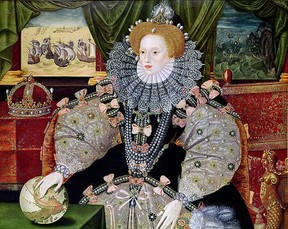 Her teeth did rot as she aged, despite trying to care for them. The dental care was minimalistic at the time and Elizabeth had some teeth removed. However, you would never be able to tell that from the paintings! She would also have rags stuffed in her mouth so that her cheeks didn’t look hollow, as she was slim built.
Her teeth did rot as she aged, despite trying to care for them. The dental care was minimalistic at the time and Elizabeth had some teeth removed. However, you would never be able to tell that from the paintings! She would also have rags stuffed in her mouth so that her cheeks didn’t look hollow, as she was slim built.
Not all the vanity was due to her smallpox outbreak; however, that did lead to the focus on her facial and hair appearance. Elizabeth was very modern for her time and focused on fashion, very much like her mother, Anne Boleyn. She encouraged the people at court to dress well and loved her jewels, clothes and boots.
Elizabeth was not the only Tudor to suffer from smallpox. Her half-brother, Edward VI, contracted the disease sometime in 1552. That is possibly something that led to his death in 1553, when he likely died of TB. Luckily for Elizabeth, she managed to fight the infection and went onto reign for another 41 years without any other serious illnesses.


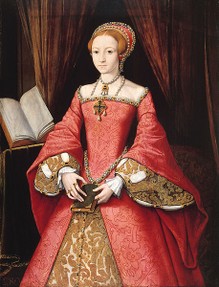 On October 10, 29-year-old Elizabeth I was taken ill. At first, it seemed like it was just a bad cold but her temperature soon increased and it was clear that it was the more serious illness called smallpox. It is a virus that didn’t have a cure for back in the 16th century. There is now a vaccine for it and has pretty much died out in the Western World thanks to medicine.
On October 10, 29-year-old Elizabeth I was taken ill. At first, it seemed like it was just a bad cold but her temperature soon increased and it was clear that it was the more serious illness called smallpox. It is a virus that didn’t have a cure for back in the 16th century. There is now a vaccine for it and has pretty much died out in the Western World thanks to medicine.


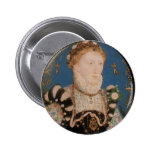
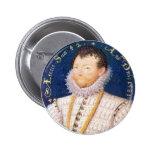

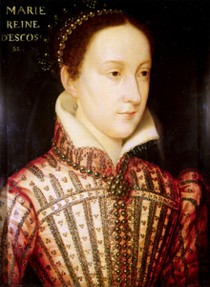 Very little is actually written about Elizabeth’s time of suffering with smallpox. All that is known is that people feared she would die. In 1562, the best person eligible for the throne was Mary, Queen of Scots, but Elizabeth didn’t want her cousin to become queen. Henry VIII never wanted that to happen either, but Frances Grey had already pushed her chances by working with John Dudley to place her daughter on the throne.
Very little is actually written about Elizabeth’s time of suffering with smallpox. All that is known is that people feared she would die. In 1562, the best person eligible for the throne was Mary, Queen of Scots, but Elizabeth didn’t want her cousin to become queen. Henry VIII never wanted that to happen either, but Frances Grey had already pushed her chances by working with John Dudley to place her daughter on the throne. Her teeth did rot as she aged, despite trying to care for them. The dental care was minimalistic at the time and Elizabeth had some teeth removed. However, you would never be able to tell that from the paintings! She would also have rags stuffed in her mouth so that her cheeks didn’t look hollow, as she was slim built.
Her teeth did rot as she aged, despite trying to care for them. The dental care was minimalistic at the time and Elizabeth had some teeth removed. However, you would never be able to tell that from the paintings! She would also have rags stuffed in her mouth so that her cheeks didn’t look hollow, as she was slim built.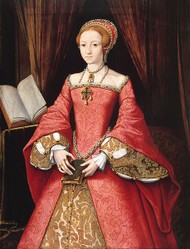

 Alternate History: What If Mary I Had a Child?on 01/26/2015
Alternate History: What If Mary I Had a Child?on 01/26/2015
 Francis II of France Dies: Mary, Queen of Scots Returns Homeon 12/05/2014
Francis II of France Dies: Mary, Queen of Scots Returns Homeon 12/05/2014
 Does Writedge Pay? Payment Proofon 12/03/2014
Does Writedge Pay? Payment Proofon 12/03/2014
 Alternate History: What If Lady Jane Grey Was Not Deposed?on 11/11/2014
Alternate History: What If Lady Jane Grey Was Not Deposed?on 11/11/2014
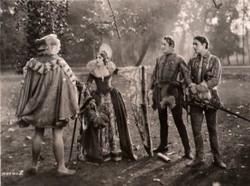
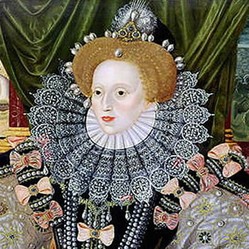
Comments
I always wondered the same thing, Kari.
This is fascinating. I had wondered if there was a more practical purpose to her iconic makeup. It's really neat to see that there is.
Thank you! There is just so much that is often pushed under the rug, so to speak. I hope I can dig some more out in my research to share.
Very interesting. The Tudors have always been a fascination of mine. It's nice to read about little known things about them.